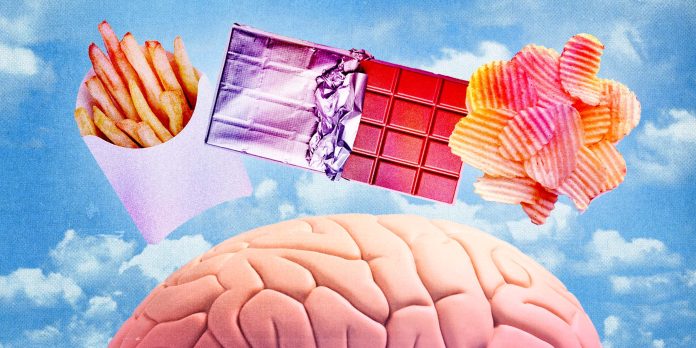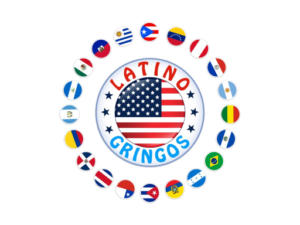When we consider following a diet or, at least, changing our eating habits, we think that, no matter how much we give up hamburgers, pasta, or sweets, they will continue to appeal to us more than a plate of legumes or some boiled chard.
To date, scientists have suspected that once the brain circuits that underpin addiction to unhealthy food are established, they are difficult or nearly impossible to break. As with most ex-smokers, people who are used to high-calorie diets, no matter how much they manage to diet, are tempted for life by the foods they ate before. But a study, published in the journal Nutrition & Diabetes, ensures that it is possible to train the brain to prefer to consume healthy foods, reversing this trend.
“We are not born loving French fries and hating, for example, whole wheat pasta,” explains Susan B. Roberts, Ph.D., a professor at Tufts University and co-author of the study. “This conditioning is formed over time in response to the repeated intake of unhealthy foods.”
If you want you can
KEEP A DIARY
You cannot change what you are not aware of. Therefore, write down in a diary what you eat, how much, at what time, and what is your mood when you do it. Only then will you really know if you eat a lot, if you seek refuge in food when you have an upset or are stressed, etc.
CHANGE THE FOCUS OF WHAT YOU LIKE
Look for the bad in the dishes you like and the good in the ones you don’t like. Instead of reminiscing about how delicious it is to dip bread into fried eggs, think about how oily they are, how heavy they are… Instead, get excited about the creamy texture of the avocado in the salad… Your brain will store this information to make choices healthier another day.
EAT CONSCIOUSLY
So that when your brain receives the signal that the stomach is already full you have not gobbled up amounts of food without rhyme or reason, eat consciously. Look first at the composition of the dish, at the colors… Then identify the different aromas it gives off. Take a bite to your mouth and notice the texture of the food, if it crunches or not, and if it is spongy. Afterward, savor it by trying to differentiate the different ingredients and tastes (spicy, sour, salty…).
TRY TO EAT SLOWER
The brain learns by imitation, so if you sit with slow eaters, you might eat more slowly, chewing more. What do you get with it? In addition to better digestion, you also manage to eat less, because it takes about 20 minutes for your brain to receive the signal that you are full.
THINGS HAVE TO BE EARNED
Record it in your head. Craving a scrumptious meal? Well, nothing to call a food delivery service, since surely you ask for more, letting yourself be carried away by gluttony. Open the fridge (where there should only be healthy food) and cook! And since the brain is comfortable, surely your recipes will be simple, but delicious and more balanced than what you can ask outside.
NAME YOUR HUNGER
If behind your “addiction” to chocolate there is an unresolved emotion, if that extra piece of pizza is calming the anxiety about not being able to leave the house… instead of eating, write a journal in which you name what you corrode inside Expressing your emotions will make it easier for you to solve your problems and you will avoid resorting to junk food.
SLEEP FOR YOUR BRAIN TO REST
If you don’t rest, reaching out for a bun or ice cream is almost automatic, because your brain seeks to compensate for the “slump” with high-calorie foods. Therefore, sleeping between 7 and 8 hours each night is essential. If you don’t get it, resort to a 20-minute nap to make up for it.
AS HURRY AS YOU ARE, BE SELECTIVE
You are overwhelmed, with nothing prepared and your mind tells you to quickly fix dinner so you can rest. This ends in cutting sausage and cheese, and throw that you go. Stop buying these foods and, without changing the chip of doing something quick, introduce the software of the right choice: for example, bread spread with fresh cheese or avocado smoked salmon and fresh spinach or arugula. Fast, light, and healthy!
Let’s face it, it’s hard for us to prefer a salad to a cheeseburger and those homemade fries… Lettuce doesn’t make our mouths water, but… we can manage to do it. We can “program” our brain to make choices that help us lose weight (and without the need for electroshocks, we promise).
And it is that real hunger is one thing, that of the stomach that grumbles because it needs you to add something after empty hours, and another very different, emotional hunger, which is very likely to appear in moments of uncertainty and confinement like the one that we are living.
HOW DO YOU KNOW IF YOU ARE REALLY HUNGRY?
That’s easy! There is a method that never fails. To find out if you are hungry or if it is something else, think about whether you would eat a plate of sautéed chard or if you need “something else”, call it chocolate, ice cream, pizza, rolls, chips…
The first option, make no mistake, is that of real hunger. You know, the hunger that makes you “eat the stones”, the chard, the broccoli, or whatever is put in front of you. The other is gluttony; it is the choice of a capricious brain that has learned to “cover” other emotions with food.






